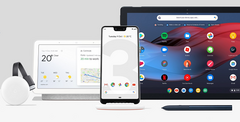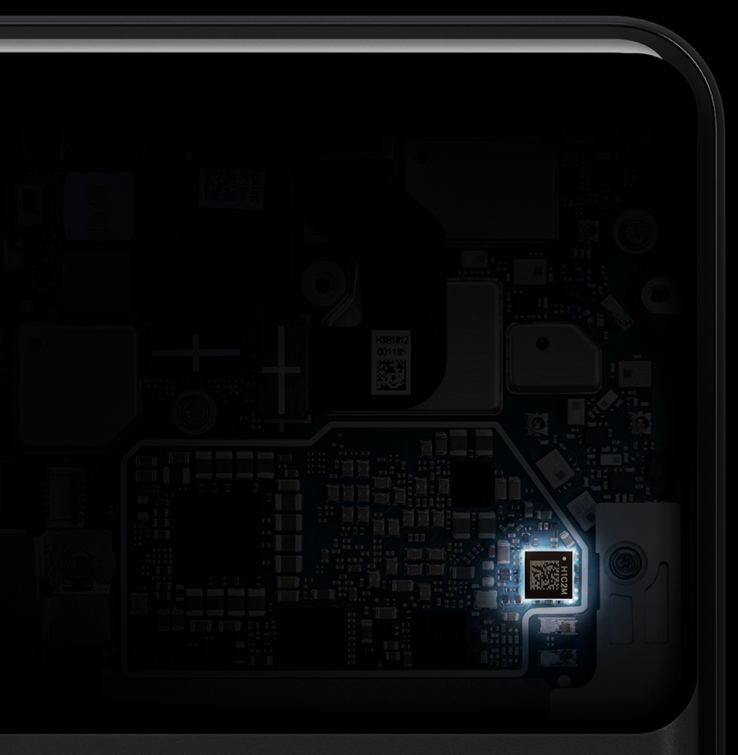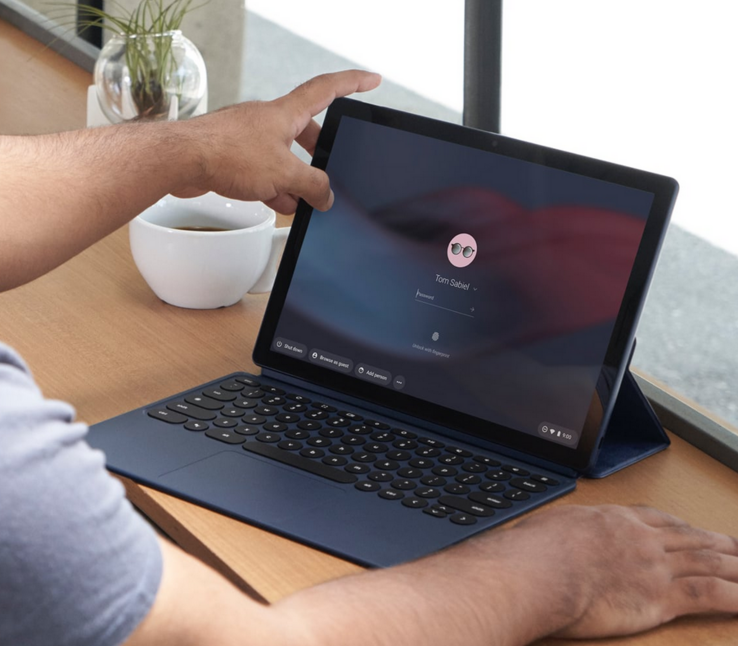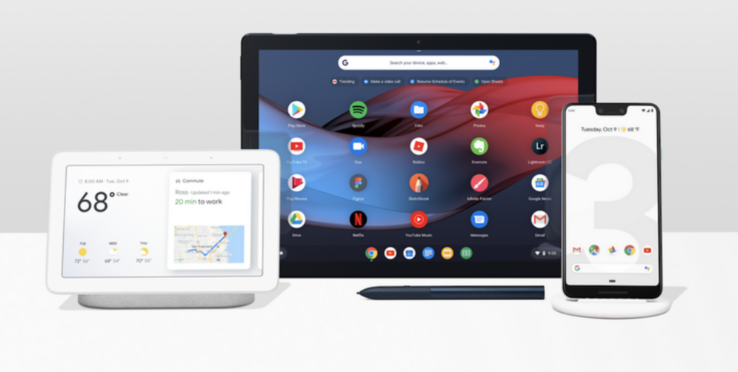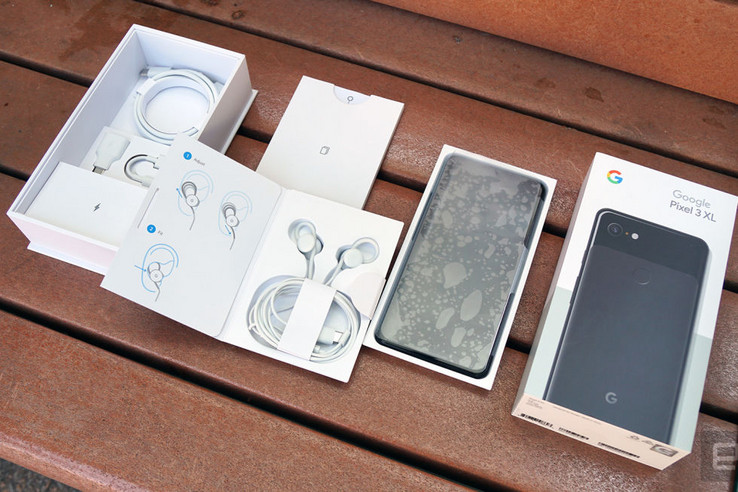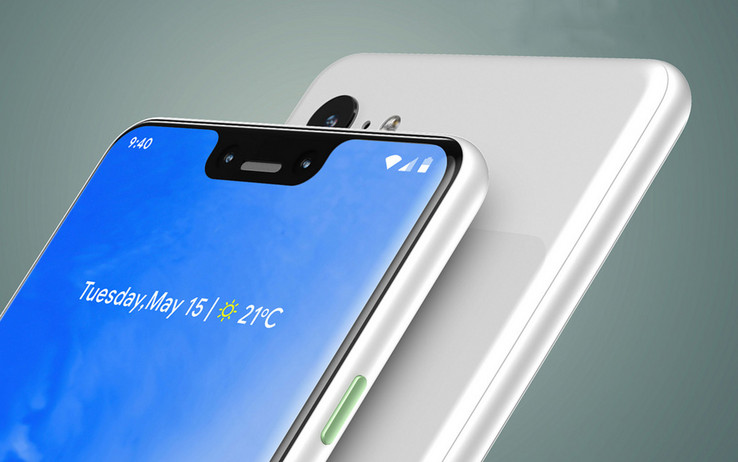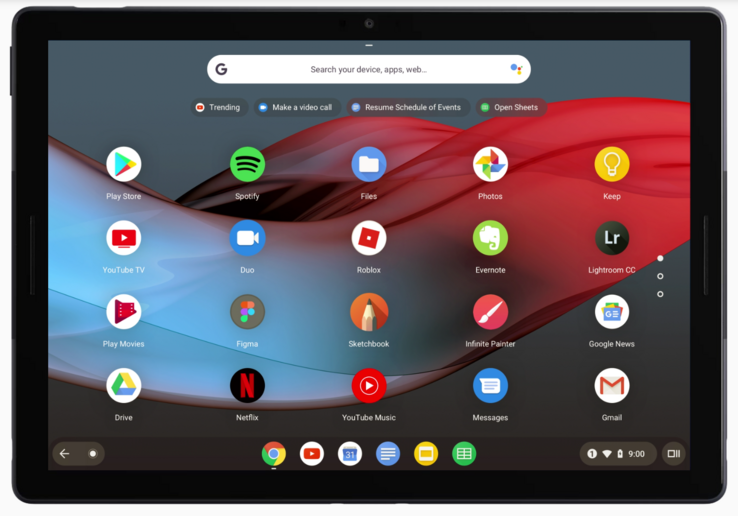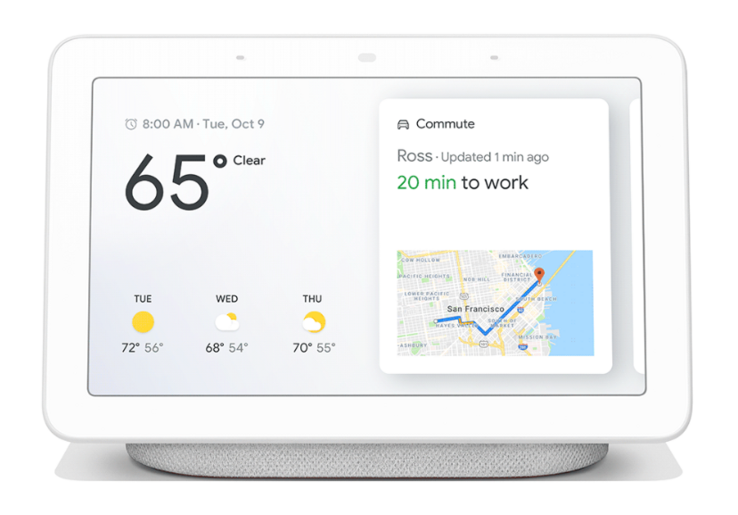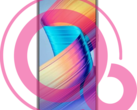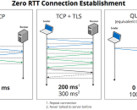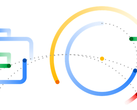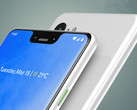What Google Got Right
Software
Google continues to impress with its software. With Android 9.0 Pie, the company is well and truly level with Apple regarding the speed, stability, sophistication and overall seamlessness of the Android operating system. It continued to build on this foundation at the Made by Google 2018 Event by showcasing some genuinely remarkable technology that is coming to its Pixel devices. This includes the previously previewed Google Duplex AI service that can make calls on a user’s behalf and make reservations as well as a new call-screening service that helps you avoid wasting time answering marketing calls. It delivers a transcript of the caller's response so you can decide whether to take the call or not.
Perhaps one area where Google has started to assert its superiority is with its image-processing software. For the past couple of years, Google has been sitting on top (or near the very top) of the smartphone pile with the quality of the still image photos produced by its Pixel smartphones. This is despite forgoing a second rear camera that has become a minimum requirement for flagship smartphone, at least over the past couple of years. Google has been able to achieve this with unique image-processing algorithms.
The new Pixel 3 models take this to a new level using sophisticated computational photography methods. The best example of this is the new Super Res Zoom feature that is traditionally used for astronomy and scientific imaging. This is one of the ways that Google has by-passed the need for a second rear camera. The iPhone X/s uses a second camera to deliver optical zoom as one of its functions. With the Pixel 3, pictures taken with digital zoom (which can generally provide grainy results) look just like they were shot with a physical optical zoom lens.
Google has also deployed its AI techniques on the new Smart Compose feature in Gmail. While we are familiar with word prediction to help assist us when writing text on our mobile phones, Google is now using AI to help us by predicting entire phrases. Gboard will also recommend GIFs, stickers and other elements to help make your conversations quicker and more interesting.
Custom silicon
The Pixel 3 models both incorporate the latest iteration of Google’s Custom digital image-processing hardware it calls the Pixel Visual Core. As before, it performs vital operations related to its image-processing software while taking the computational load off the CPU, but more tasks are now being directed to its machine learning function in its latest iteration. As Samsung and Huawei, among others, have realized, it has become increasingly necessary to have your own custom silicon if you want to be able to compete head-to-head with Apple. The days of picking parts off the shelf are over if you want to be successful in differentiating your product enough in a saturated market.
To this extent, Google has also developed a new piece of custom silicon sitting alongside its Pixel Visual Core and the more standard Qualcomm Snapdragon 845. Dubbed the Titan M, this is the new custom security chip designed by Google. It has been integrated into the chipset to help secure the boot process. It is built on the same tech that Google uses to secure its data centers and provides enterprise-level security to strengthen pass-code authentication and drive encryption.
Pixel Slate
As with the Pixel 3, we already knew exactly what the Pixel Slate and its accompanying keyboard cover looked like before it launched. However, we didn’t know whether it ran an ARM-based chipset or an Intel one. Typically, this type of device would have featured ARM-based silicon in the past, but Intel has finally got its act together with its Amber Lake “Y” series chips, and the Pixel Slate comes with three iterations of this silicon. One is powered by a Core m3; the other two are powered by Core i5 and Core i7 variants. They are all 5-watt designs and don’t need a fan to keep them within the required thermal design profiles. There are also a couple of Celeron-powered versions at the entry-level, one with 4GB of RAM, the other 8GB.
The Slate runs the latest version of Google’s Chrome OS that has been optimized over the past several months in readiness for this very sort of 2-in-1 device. Android app support has been available on Chrome OS for a while now, but the interface has been optimized for touch-based interaction as well as split-screen app support. This puts it very much on par with Apple’s iPad Pro from a productivity perspective. As it uses a full-fledged desktop version of the Chrome browser, it is arguably even better positioned from a productivity perspective.
The use of Intel silicon is also significant for another reason: It gives the Pixel Slate the potential to dual-boot into Windows 10. Although Google had nothing to say about this possibility, we have known for some time that the tech giant is working on a project dubbed ‘Campfire’ that is designed to support this very capability. The i5 version of the Pixel Slate ships with 8GB of RAM and the flagship i7 version ships with 16GB of RAM. This may be overkill for Chrome OS, but it is perfectly positioned to run Windows 10. We suspect that Google will launch the leaked Pixelbook 2 alongside Campfire in the near future and bring this across to the Pixel Slate at the same time.
When Google does this, both the iPad Pro and the Surface Pro will have some serious competition. Users would be able to use Chrome OS for Android apps or Windows 10 for a full PC experience.
Works Better Together
Google knows that one of the critical advantages that Apple has over the competition is its seamless hardware and software integration. If Google is to challenge Apple, it knows it needs to build a software and hardware ecosystem that works “better together” just as Apple has done. Of course, Apple has a massive lead in this respect, but Google has the capability to develop a competitive alternative. It already has a robust app store and wide-ranging service offerings across video and music.
Google’s hardware line-up now includes smartphones, laptops, 2-in-1s, and a range of connected devices, including the new Google Home Hub, the Home Max, Home and Home mini. Added to these are Google’s Nest-branded range of products, including the Nest Thermostats, Nest Protect and Nest cameras. All of these are connected seamlessly by Google’s AI and algorithm-driven software and services.
Slowly but surely, Google is positioning itself as a viable alternative to Apple in both hardware and software. Another possible potential ace up its sleeve is its Fuchsia OS. Currently in development, Fuchsia is shaping up as the crucial pillar in Google’s plans to properly challenge Apple. It is already working on custom silicon; a custom operating system unique to its Pixel devices will be essential if Google is going to truly differentiate itself from the competition. This competition also includes current key Android partners like Samsung. As some have noted, Google didn’t mention Android by name once during its Made by Google event. Fuchsia could well be the reason why.
What Google Got Wrong
Leaks Galore
With supply chains well and truly global these days, it is challenging for companies like Google and Apple to keep a lid on their product plans. Gone are the days like the launch of the original iPhone where the top makers could genuinely surprise and delight their audiences. These days, we routinely learn most of the details about upcoming products well before they ship. This includes everything from schematics, to the silicon they will run, through to production prototypes and product renders. Google outdid itself this time though.
There wasn’t a single product revealed at the Made by Google event that hadn’t already been leaked in full. However, even Google managed to ramp things up a notch. It’s one thing for devices to leak in all their glory before the official reveal but Google hit a new low when a mobile store in Hong Kong started selling the device to customers days before the Pixel 3 XL was officially unveiled. Similarly, the third-generation Google Chromecast was also sold to a customer before its official launch.
To say that these types of occurrences are embarrassing is an understatement and Google really needs to redouble its efforts on this front.
Ugly Notch On The Pixel 3 XL
When the Pixel 3 XL first leaked back in July, no-one could believe their eyes. The rumor mill had predicted that Google’s next flagship would likely include a notch (which was already bad enough for some, sight unseen), but nothing prepared anyone for just how ugly it would be. Although it is narrower than the iPhone X/s notch, it is noticeably deeper. While it provides additional screen real-estate to show details like the time and other notifications much like a secondary display, the Pixel 3 XL notch is truly intrusive. Worse, unlike the iPhone that doesn’t have any other bezels cutting in on its ‘all-display’ design, the Pixel 3 XL has a large ‘chin’ at the bottom of the display too.
The design is reminiscent of some of the early iPhone X “notchalikes” from the first half of the year. However, the evolution of Android design this year has been so rapid that Google’s effort already looks dated compared to much less-intrusive notch designs like the new ‘teardrop’ One Plus 6T that the Pixel will also be competing against. Making things worse for Google, it hasn’t been able to offer much in the way of justification for the notch. While Apple incorporated a highly complex biometric authentication system into its equally controversial notch, Google has merely added a second wide-angle “groufie” camera to its notch.
Yes, it appears that you can dig into the system settings to “hide” the notch, but that ends up making the device looks as dated as its smaller Pixel 3 stable-mate with its rather 2016-looking bezels. At least the regular-sized Pixel 3 doesn’t incorporate a hideous notch, although its bezels are remarkably thick for a 2018 flagship smartphone. Not that Google didn’t want to add a notch to it as well; but its efforts were thwarted by engineering limitations – thankfully. It’s a shame, because both devices feature incredible software, as we’ve noted above.
No Cellular/LTE On The Pixel Slate
The Chrome OS-based Pixel Slate holds much promise and could well be the sweet spot when it comes to the ideal operating system environment for 2-in-1 tablet designs. However, one baffling omission from the Pixel Slate range is a cellular or LTE option. In this day and age of being always-on, always connected it is hard to properly compete in this segment of the market without the option of cellular connectivity. Both of the two main rivals of the Pixel Slate, the iPad Pro and Surface Pro, offer cellular options.
Google claims that customers will be happy enough merely tethering devices like the Slate to their smartphones. This may well be the case for the majority of customers, but power users are far more likely to want their secondary device to have cellular connectivity built right in. At US$1599 for the top of the line Pixel Slate, you would at least think that a cellular connection could or should have been included for at least that model.
One reason why the iPad is so popular is that Apple has partnered with telecommunications companies around the globe on data plans for its cellular models. This has the side benefit of allowing customers to pay off their iPad over a 24-month contract rather than forking out the money upfront for the device. Customers who want a Pixel Slate are going to have little option but to find the money upfront if they want it as a secondary device. This puts it at somewhat of a disadvantage.
Another reason that Google may have abandoned a cellular connection on the Pixel Slate had to do with its decision to go with an Intel chip instead of an ARM-based chip. There are ARM-based options that integrate a modem into the SoC. There isn’t an Intel chip design that does the same. This would have required incorporating an additional chipset into its design, which would have also compromised the claimed 12-hour battery life of the Pixel Slate. Regardless, Google will undoubtedly sell fewer Slates because of this omission.
Google Home Hub Can't Do Video Calls
The Google Home Hub is almost perfect as a smart home device. It takes the Google Home range up to the next level and makes it the ideal interface for managing your smart home, including offering connectivity for indoor and outdoor security cameras. However, it has launched without video support for Google Duo video calls. On the one hand, one can understand why not. It would have immediately raised the inevitable concerns in regard to privacy.
However, the Google Home Hub has launched just a week or so after Facebook launched its new Portal range that focuses entirely on this very capability. Inevitably, Facebook was hammered over its privacy track record, but it launched the Portal with those very concerns in mind and took a number of active steps to mitigate against this. The measures included building in a flap that can be used to cover the camera when not in use. Google could have easily done the same.
Instead, the Google Home Hub can only support voice calls as it doesn’t come with an inbuilt camera, which (privacy concerns aside) really seems odd. Thankfully, you can get just about all the functionality of the Google Home Hub as well as the ability to have video calls using Google Duo on the Lenovo Smart Display. If you like buying into an ecosystem and have products all from the same maker, it seems likely that you will have to wait at least 12 months for Google Home Hub v2.0. By then, Google no doubt hopes you will have come to terms with the idea of having another camera in your house.




